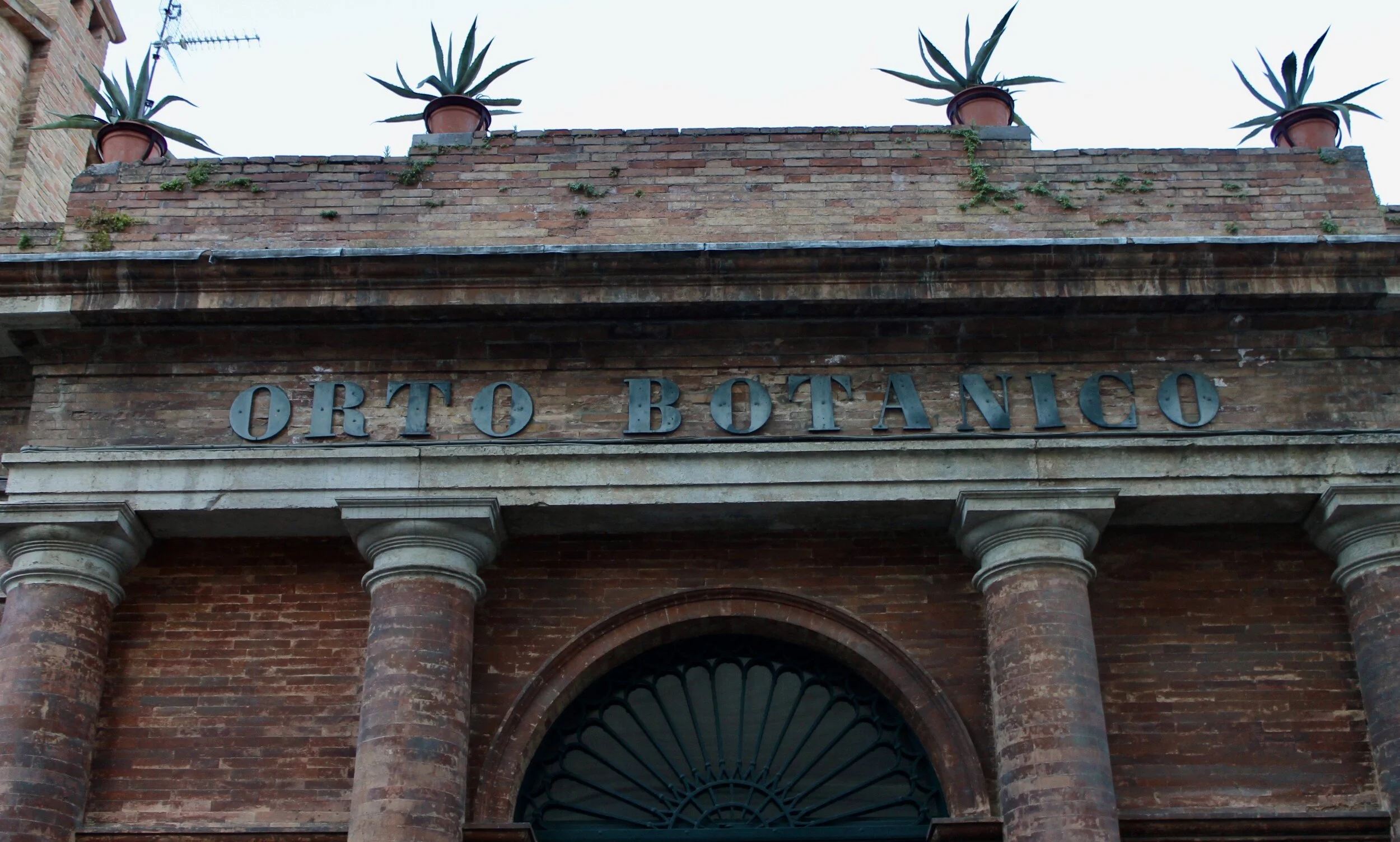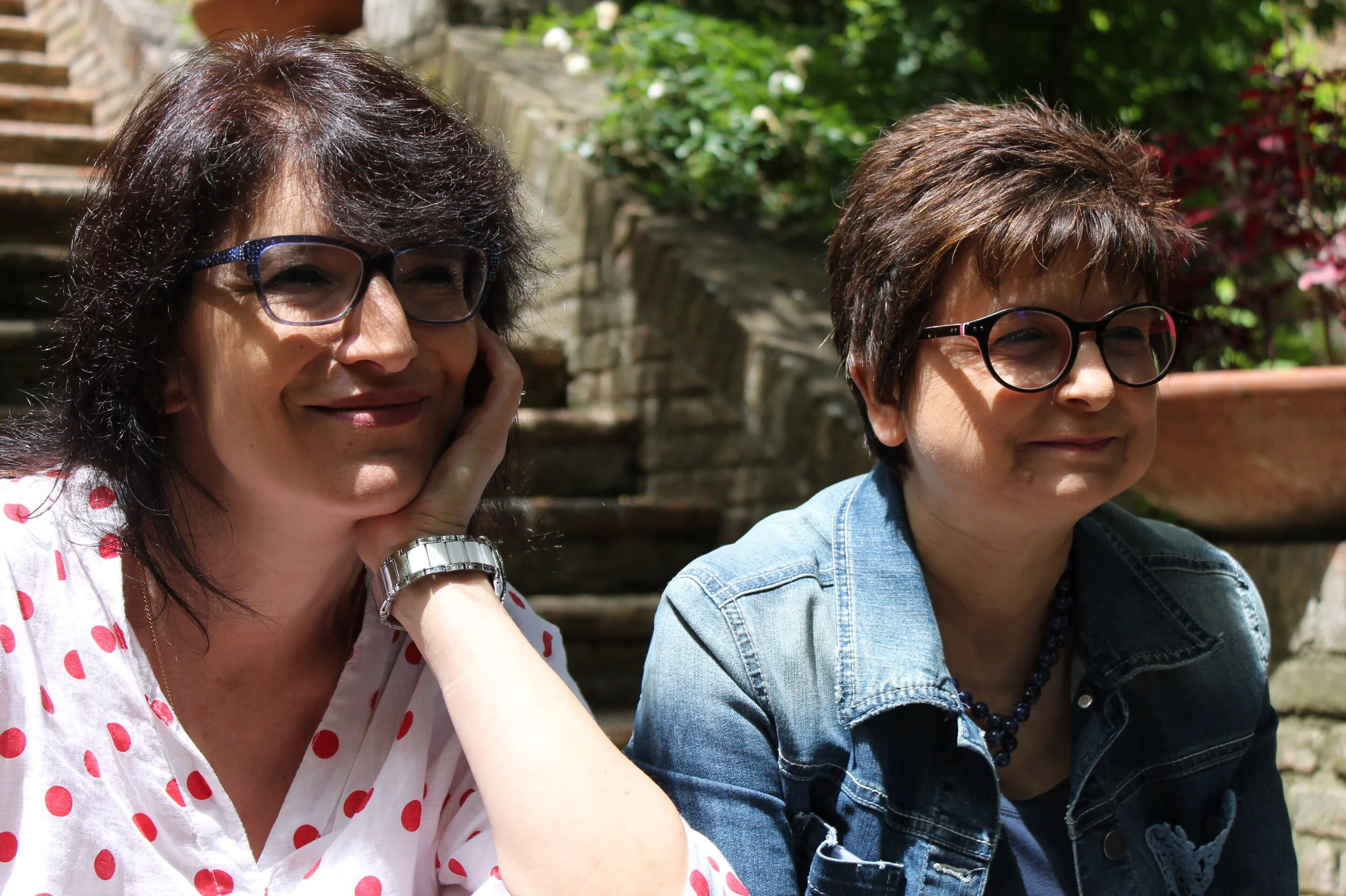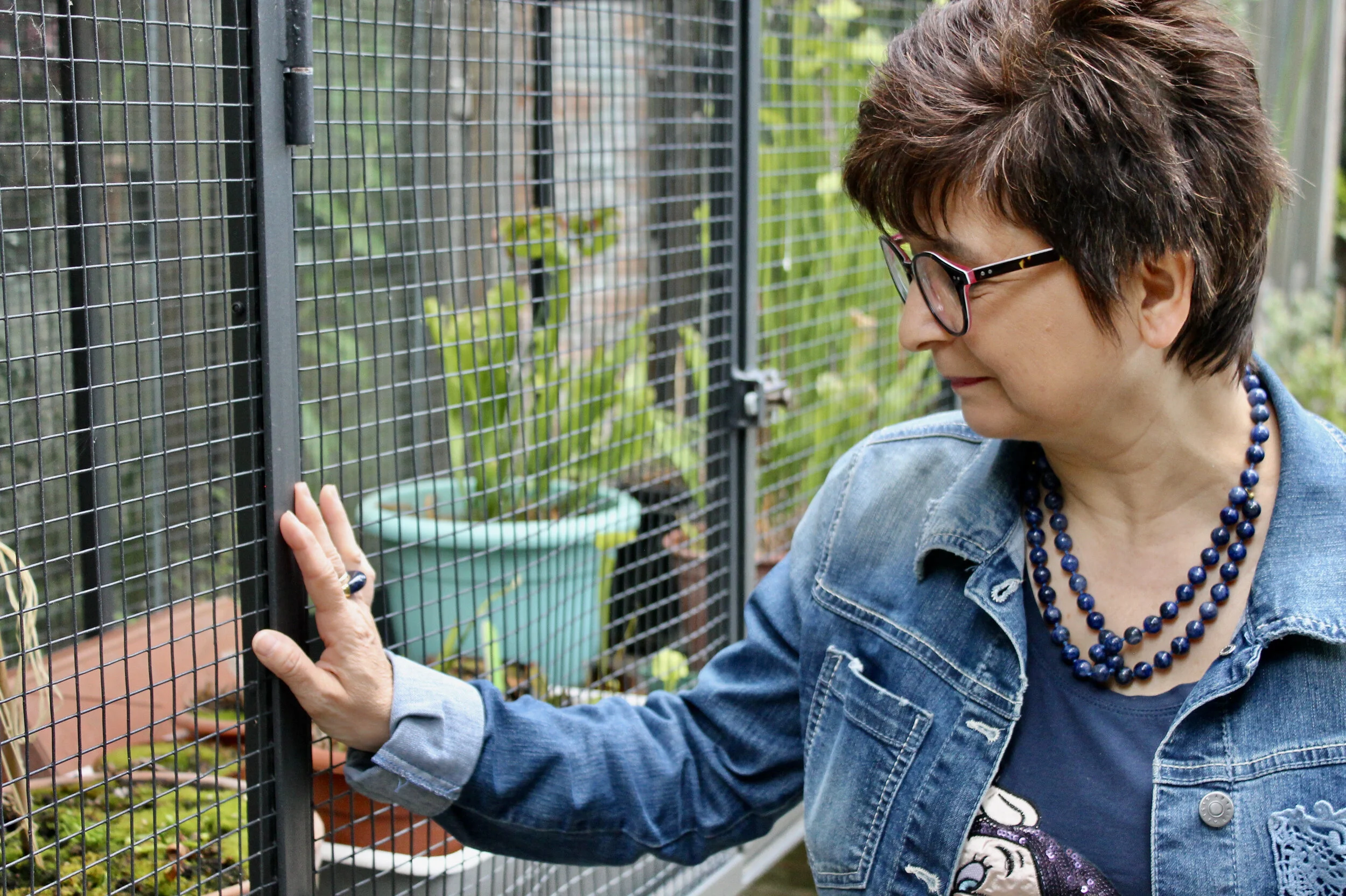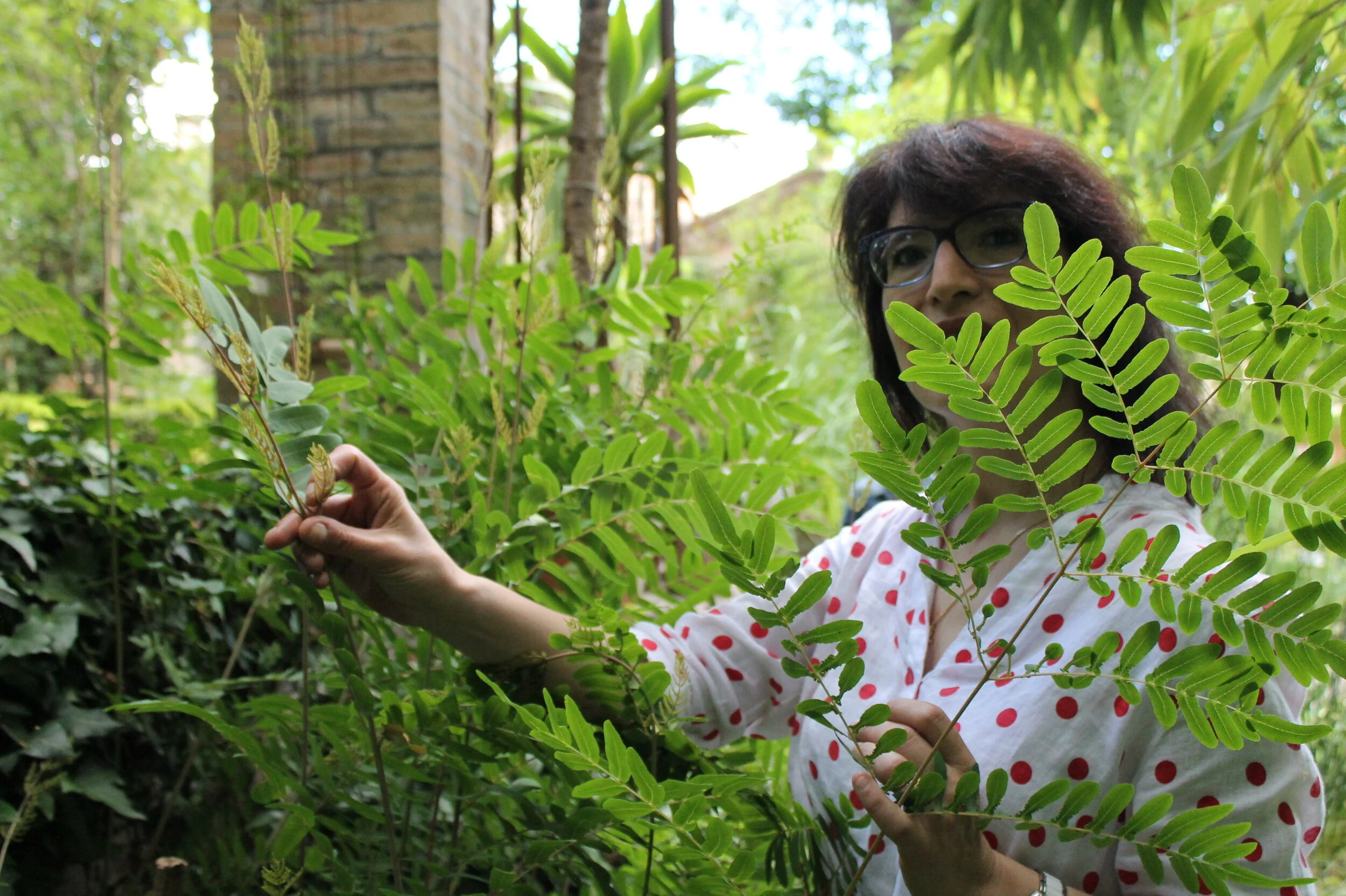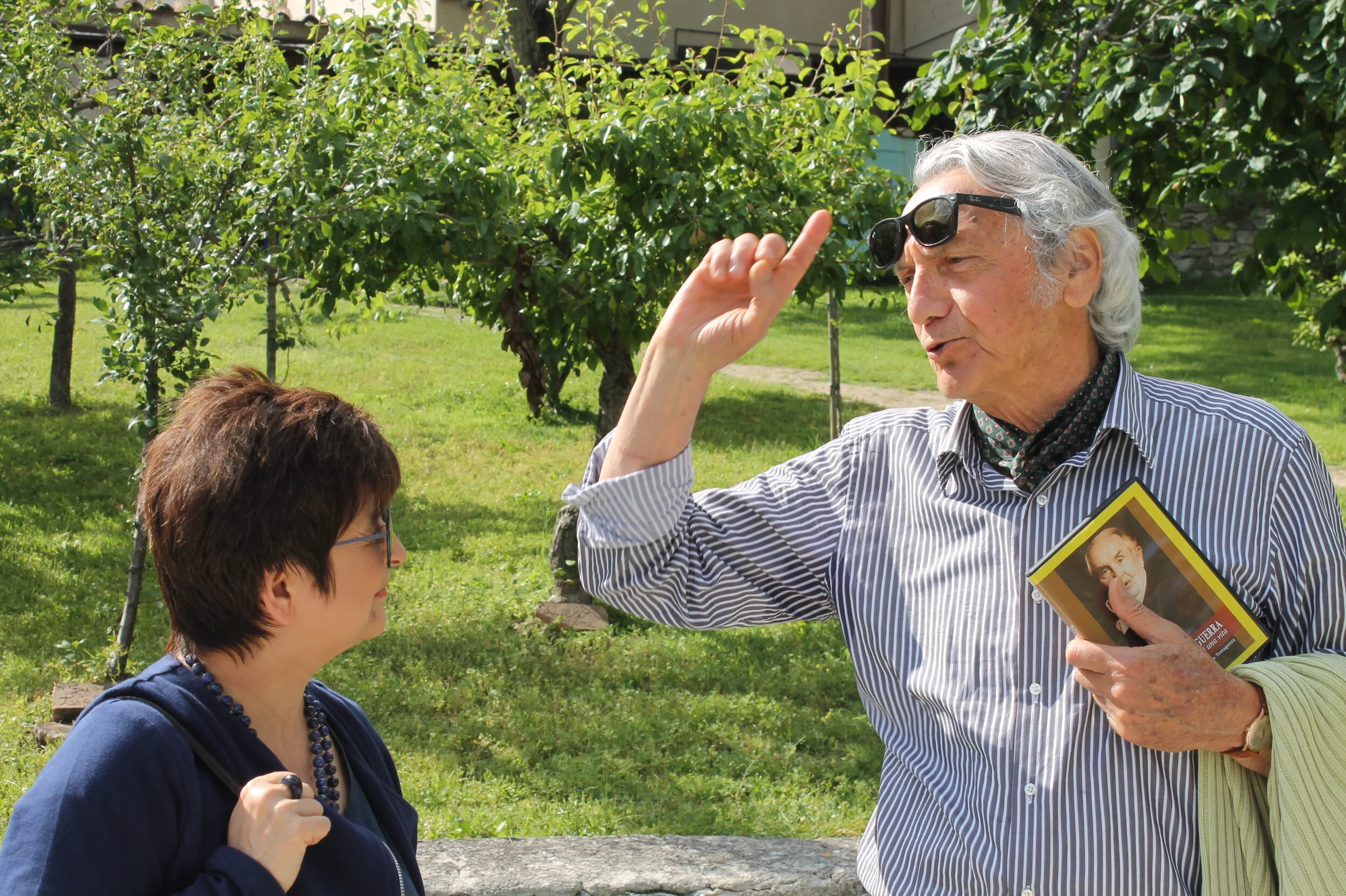
Discovering Their Roots
The following photos and text are from my time abroad in Urbino, Italy. I covered the local botanical garden and the phenomenal women who oversee and operate the garden.
You can find the original publishing of this piece here.
The façade of the L’Orto Botanico in Urbino, Italy.
Soft morning sunshine gleams through the holes the canopy of trees has yet to cover, and the songbirds commence their symphonies. The lush and deep greens provide cover for the small reptilian residents scuttling across the ground. Soft pinks, bright purples, and bold reds pop out against their leaves, acting as spotlights for pollination. Small white signs scattered across the grounds identify each stalk or bush or trunk that call Urbino’s Orto Botanico home; noted on each sign are the names and medicinal benefits of the plant. As Laura Giamperi and Elena Bucchini walk through the garden, they stop frequently, examining, pruning, and commenting on the many plants. Posing by their favorites—the ginkgo biloba, or maidenhair tree, for Bucchini and the fagus sylvatica, better known as the European beech tree, for Giamperi—the two women smile proudly next to trees older than either woman could ever hope to be.
Giamperi and Bucchini are both environmental scientists who have been working at the garden for 29 and 15 years, respectively. These two women have worked together and separately on a multitude of research projects covering everything from the basic construction of a unique type of fern to the possibility of a certain type of apple having cancer-inhibiting properties. However, the appeal of botany, biology, and teaching for these scientists exceeds the intriguing research and impactful findings; for them, the fascination of this profession roots in the ability to save the planet.
“It is important to discover, search, and find (the) fruits. They are part of our culture, part of our heritage, part of our territory,” - Elena Bucchini.
Elena Bucchini (left) and Laura Giamperi (right) basking in the morning sunshine and the lush garden they oversee.
The Orto Botanico was not always about such diverse research. In 1809, botanist Giovanni De Brignoli founded the garden initially for medical and agrarian studies. Brignoli brought hundreds of herbs and plants from outside of Italy to add to the plants that were already growing in the garden; many of these, such as a European yew and a pond pine, still thrive in the garden today. He built a large greenhouse to nurture the foreign plants, and the greenhouse remains, joined by two newer ones. By 1844, Brignoli had left Urbino to teach botany elsewhere in Italy, and the garden was given to the university in a “perpetual lease.” The current director of the garden, Donata Ricci, explains that before 1860 there were no scholars or professors running the garden, “it was just important citizens of Urbino who had a passion for it.” From 1860 onward, science professors from the university have overseen the garden.
As you approach the Orto Botanico on Via Bramante, the façade of terracotta bricks and four Doric-style columns loom above, while a fountain-turned-fish-tank babbles off to the right. The grand double-doors swing inward to a small hallway, the ceiling decorated in frescoes depicting a nighttime oasis. Ahead, a pair of stained-glass doors scatter diamonds of multi-colored light across the floor and mask the grandeur of the garden beyond. Once through the doors, a sea of green surrounds you.
Elena and Laura inspecting one of the many plants they research.
The garden starts on either side of a large stone staircase. On the left are the tropical greenhouse and the current collection of research plants, which Bucchini so fondly calls the “dyeing plants.” Giamperi and Bucchini are testing these plants to determine what colors the plants produce and how they can be used. They’ve already discovered that one plant, even though the flowers are yellow, yields a blue color. On the right side are a bamboo forest, a well that dates back to when the garden first opened, and other smaller beds of flowers. The base of the staircase leads to the first of three terraces and the “Garden of Simples” where the medicinal plants grow and where some of the garden’s water-plant species live.
To the left of the Garden of Simples is the De Brignoli greenhouse that in the summers holds classes for students of all ages, and in the winter holds all of the foreign plants, so they survive through the colder months. Giamperi and Bucchini offer students traditional lecture-type learning paired with a hands-on lab. These students learn about botany and biology and how these impact the environment around them. Past the De Brignoli greenhouse is a greenhouse of succulent plants that holds over 20 different species.
Laura Giamperi looking fondly at the exotic plants housed in the De Brignoli greenhouse, one of which includes venus fly-traps.
To the right of the Garden of Simples and down a step is the second terrace. The plants in this part of the garden are grouped with their relatives following the Linnaean system, a method for classifying the living world. Down into the third terrace are flowerbeds of various kinds and three more so-called “monumental trees,” European beech, European yew, and a tulip tree, all of which date back to the era of the garden’s founding.
Back inside the main building of the Orto Botanico, past two large cabinets holding glass jars of medicinal plants from several different centuries and up a staircase steep as Everest, are the offices of Giamperi and Bucchini. These offices double as a lab space, with scattered beakers, latex gloves, stirring rods, various machinery, microscopes, and samples of plants.
Sitting behind a vinyl desk, Giamperi, with a sequined Dopey-the-dwarf on her shirt, explains that, aside from their current research on plant dyes, she and Bucchini spend most of their time studying medicinal plants. Many plants, she explains, contain bioactive compounds, which are substances that affect living organisms. Such substances, Giamperi says, can be found naturally in some plants and used medicinally, which is why the scientists have such an interest in them. The classic example of this is aspirin; the salicylic acid found in the slippery elm is the main component. Giamperi has also studied substances that control the growth of plants and plant essential oil extracts, both how active the oils are and how much the plant contains.
“At a time when men make everything dirty—the air, the soil, and water—if we don’t go back to having respect and devotion for nature, it’s the end for us,”
- Tonino Guerra | poet, screenwriter, and environmental advocate
The plants that excite Giamperi and Bucchini most, however, are “forgotten fruits.” “When we talk about forgotten fruits,” says Giamperi, “we refer to plants of old tradition that have been abandoned because there are other crops that are more productive and better for industrial production.” The most common example of this is heirloom tomatoes. Heirloom tomatoes are not as aesthetically pleasing as the tomatoes sold at supermarkets; they are oddly shaped, multi-colored, and not easily packed to be shipped. Even though heirloom tomatoes have more flavor, they were cast aside in favor of the compact, round, and consistently colored tomato sold in every supermarket. While the forgotten fruits bring back different flavors, taste is not the reason rediscovering them is important to Giamperi and Bucchini. To Bucchini it is because “they are part of our culture, part of our heritage, part of our territory.”
Elena Bucchini explaining the biological parts of her favorite ferns in the garden.
The first variety of forgotten fruits that Giamperi and Bucchini studied was one called the cocomarina pear. Giamperi explains that the true origin of the pear is not known for sure, but it is native to the Marche region. Giamperi and her colleagues noticed that the pear has a red pulp, which, as they suspected, meant it contains anthocyanins. Anthocyanins are a pigment in certain foods known for the health benefits it gives, and based on the pH can appear blue, purple, or red. Other foods that have anthocyanins are blueberries, eggplant, and the sweet potato. The goal of the research was to introduce the pear to the scientific world. Before the research of this pear started, the pear was not known on a scientific level.
During research, the pear lived in the Orto Botanico. Giamperi and Bucchini studied two different cultivars, or varieties, one that ripens in August and one that ripens in October. In 2016, they found that the pears that ripen in October have levels of natural antioxidant and anti-inflammatory components 126 times higher than the pears that ripen in August. Giamperi and Bucchini concluded that the pear should be recovered and considered for more extensive research.
After the research concluded, the pear was moved out of the garden. “I have (the pear) in my house,” Giamperi says, looking sheepish. “It hasn’t bloomed yet.” It seemed that she just couldn’t let that pear go. Aside from growing the cocomarina pear at her house, Giamperi gets her fix of forgotten fruits from a garden larger than her own.
In the nearby town of Pennabilli, there is a garden solely dedicated to the forgotten fruits of the Marche region. The garden, founded in 1990 by Italian artist, poet, and screenwriter Tonino Guerra, is called the “L’Orto dei Frutti Dimenticati”—the “garden of forgotten fruits.” Walking through the garden, Giamperi points out the many varieties of ancient pears, a mulberry tree that commemorates the Dalai Lama’s visit to Pennabilli, various species of ancient apples, and a giant cherry tree that can be seen at the center of the garden. She explains that Guerra was the first person to conjure up the idea of rediscovering these ancient fruits, and his revelation inspired her to pursue the same path. Her friend and attendant of the garden, Luigi Mattei, reminds her that Guerra indeed founded the garden to bring back the flavors, shapes, and textures from the fruits of the past, but also to make a statement about how humankind treats nature.
Laura Giamperi (left) and Luigi Mattei (right) intently discuss the history and importance of the L’Orto dei Frutti
Dimenticati.
Each year, there is an event held by the Tonino Guerra Association that honors Guerra and the garden. Giamperi has been attending this event for the past eight years. Two years before Guerra passed away, he spoke these words at the 2010 inauguration of the yearly event: “At a time when men make everything dirty—the air, the soil, and water—if we don’t go back to having respect and devotion for nature, it’s the end for us.”
To Giamperi and Bucchini, the recovery of ancient fruits is more than a romantic notion between human and nature. These forgotten fruits, they say, add biodiversity, which is vital to life on the planet.
Biodiversity in its simplest terms refers to the variety of plant and animal life on Earth. High biodiversity is good because it gives more food sources, more habitats, and can even lessen the damage of natural disasters. “Biodiversity is not just a theoretical thing. It is a practical application because if something happens and the common varieties we have now disappear, you are guaranteed to have something to eat,” Giamperi explains. The reason biodiversity is so important to Giamperi and Bucchini, however, is because the more diversity there is the more opportunity for new medicines there are. Biodiversity is a direct link to medicinal uses of plants.
These complex concepts—and their urgent role in the future of the planet—are what Giamperi and Bucchini teach students, young and old, in the De Brignoli greenhouse during the summers. And through all the seasons, they work to save the world, one forgotten fruit at a time. With determination in her eyes, Bucchini says, “Having biodiversity is a way of making sure nature and ourselves can live on.”
Translation of interviews and other language assistance by University of Urbino students Tonia Perreca, Michele Mainardi, and Roberto Giambona.
